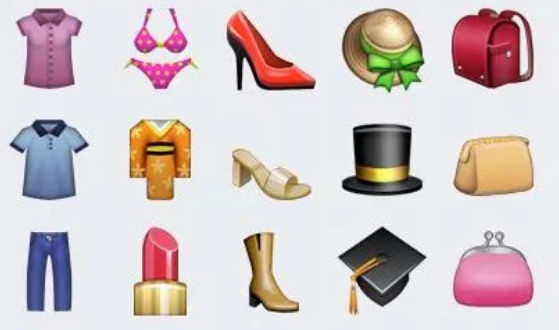
Culture
14:50, 26-Oct-2017
#IWearFlats campaign wants to break the high-heels emoji stereotype
CGTN

Created in the late 1990s by a Japanese communications firm NTT DoCoMo, emojis have existed for almost 20 years and have gradually evolved into characters for a new millennial language.
There were a total of 239 emojis available in the standard Unicode 10 character set, with an addition of 56 more in the updated version including a hijab and redhead emoji, adding more diversity.
With so many characters to choose from, people might not even notice that all three women’s shoe options are currently high heeled, contrary to its goal of being gender-neutral and giving equal treatment to men and women while not discriminating any other gender as well.

The screenshot of current emoji keyboard features three heeled women's shoes.
The screenshot of current emoji keyboard features three heeled women's shoes.
Some might say emoji is not that significant. But with more than five billion emojis sent each day on Facebook Messenger, and with 3.2 billion Internet users around the world (almost half the global population), 92 percent of whom regularly use emoji, it's important that these little symbols represent the world around us.
That’s why Floriane Hutchinson, the Silicon Valley-based arts publicist, wants to change it. Hutchinson launched a campaign called #IWearFlats, fighting to break the stereotype and pushing to add women’s flat shoe emoji to the existing list of emojis.

Photo via jiemian.com
Photo via jiemian.com
Hutchinson says she got the idea from her personal experience as a working mother with three young daughters and that she doesn’t want her children to be affected by the notion that women are supposed to wear sexualized high heels.
Hutchinson criticized the idea of associating women with high heels saying it is "problematic" and, in fact, most women do not wear heels in their daily lives. Even her own research on Instagram suggests there are 5.3 million hashtags for flats versus 1.1 million for stilettos.
"The implicit expectation, albeit a virtual one, that women would and/or should wear high heeled shoes (be it a stiletto, a mule, or a boot) is simply absurd," she said.
Hutchinson’s proposal has been submitted to The Unicode Consortium Emoji Subcommittee and a decision is expected in November.
Whatever the outcome is, Hutchinson is happy she made the move. "If you see something that bothers you, odds are you can do something about it," she said. "There is no reason to accept the status quo."

SITEMAP
Copyright © 2018 CGTN. Beijing ICP prepared NO.16065310-3
Copyright © 2018 CGTN. Beijing ICP prepared NO.16065310-3